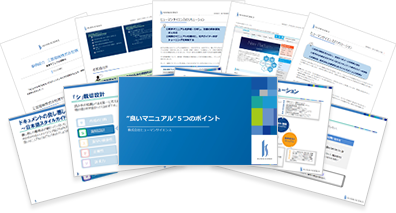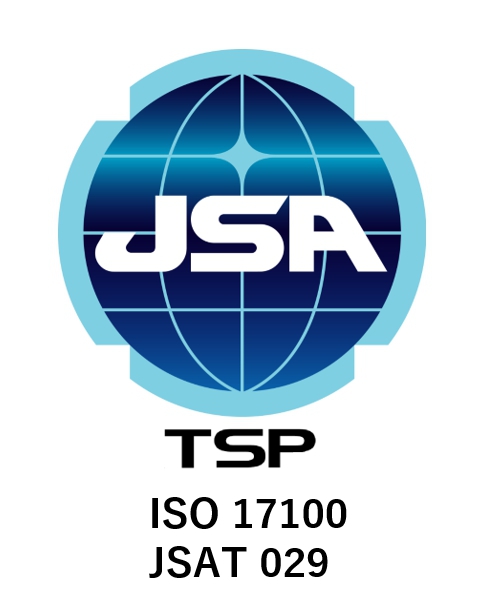What are the steps for creating a manual? Explanation of tips and key points

Hello! I am L, a consultant.
I am in charge of creating and improving manuals on a daily basis. In this blog, I wrote about the process of creating manuals, focusing on how to make them easy to understand and remember. I wanted to share stories and tips that I have learned in my daily work, so I wrote this blog post.
- Table of Contents
1. What is an Easy-to-Understand Operation Manual?

The purpose of creating operation manuals varies depending on the company and department. Some common concerns we hear at our company include "wanting to eliminate individualization of tasks and standardize operations for the entire department," "wanting to smoothly pass on skills and make veteran know-how a company asset," and "wanting to improve business and service quality for service expansion." In order to solve these concerns, it is important not only to create manuals, but also to create easy-to-understand manuals and then utilize and establish them effectively.
Whether the manual will be easy to understand and whether the created manual will take root in the field depends largely on the project management skills of the manual person in charge.
The manual person in charge needs to have a project management perspective on "what to write", "how to express it", and not just focus on the content, but also "for whom", "what kind of manual", "who to involve", and "by when" to pull in stakeholders.
So, how should we lead a manual project specifically?
Next, we will explain the points of project management in addition to the steps for creating a manual.
2. Before Starting to Create Business Manuals!

To create a business manual, first let's make a plan for the creation. One common mistake when creating a manual is to "just make it for now". If you start without proper preparation, there is a high chance of having to redo work, causing additional workload and potentially interrupting the process.Therefore, we would like to share some basic steps that our company follows as Step 0 when supporting our clients with manual creation.
Determine the concept of the manual
I believe you already have a rough idea of what kind of manual you want to create, but once you organize it as a concept, the manual creation process will go more smoothly. The concept of a manual refers to the following information:
・Main target (manual readers)
・Usage scenarios (purpose of use)
・Current challenges and goals to be achieved through manual utilization
The above are basic items. When you are struggling with what to write during the creation of a manual, having a clear concept can greatly reduce your worries. It can also prevent any inconsistencies in the content. When deciding on a concept, it is important to discuss and decide with relevant parties and superiors.
Determine the schedule for creating manuals
First, we will roughly consider when and what to implement. In the case of manuals with a large volume or variety, it is better to create them in multiple parts rather than all at once. Also, since there is a possibility of adjusting the schedule later when deciding on detailed action content and coordinating with other departments, it is good to have a rough schedule here. It is not advisable to have an unreasonable schedule design.
Consider PJ members
It is important to involve multiple stakeholders rather than proceeding with manual creation alone. At minimum, two people, the creator and reviewer, should be involved. If possible, it is also beneficial to involve representatives from the target users or other departments related to the business based on the concept of the manual. This will allow for the creation of a more practical and established manual.
Some may think that involving more stakeholders will make it difficult to come to a consensus. However, the common reason for not being able to come to a consensus is due to a lack of understanding of the manual's concept.
If all stakeholders agree on the manual's concept, then it will be easier to select and include information based on that concept, making the process smoother. Adding too much information can make the manual overwhelming. In that case, consider creating a second manual as a follow-up.
3. Steps for Efficient Business Manual Creation

Once the schedule and concept for the manual have been decided, we will finally begin creating the manual. Here, we will introduce the steps for efficient manual creation that our company is currently implementing.
①Identify the information to be included
②Consider the structure (table of contents) of the manual
③Determine the layout and style of the manual
④Write the manual
①Identify the information to be included
When creating a manual from scratch, our company uses a "business organization sheet" to identify the information to be included. We create tables in Excel and organize the information on the vertical and horizontal axes. The vertical axis includes the flow of work, while the horizontal axis includes details of the work (procedures), responsible parties (departments), timing of implementation, and reference materials. First, we identify all the information and then, based on the concept, we confirm how much information to include in the manual and check for any missing information. At this point, the person in charge of creating the manual should involve the stakeholders discussed in the previous chapter and lead discussions from the perspective of whether there is too much or too little information and whether the work procedures are the best in the current situation.
The details of business organization are also explained in detail in the following blog.
https://www.science.co.jp/document_blog/31016/
② Consider the structure (table of contents) of the manual
Once the information to be included has been determined, we will consider the structure of the manual. As a common practice, the structure often follows the flow of the business. Alternatively, it may be organized into beginner and advanced sections, or include a separate troubleshooting section, or consider how to include reference materials, all based on the concept of the manual (target users and intended use). Additionally, it is recommended for the manual creator to review the overall schedule once the table of contents has been completed. Taking into account the length of each chapter, we can determine how much time is needed for each chapter, which chapter to start writing first for efficiency, and whether multiple chapters can be written simultaneously. Let's detail the schedule from these perspectives.
③ Determine the layout and style of the manual
One of the factors that makes manuals difficult to understand is "difficult to read". The main reason for this is the inconsistency in the way information is presented and the style used.
A common mistake in the way information is presented is to start with detailed information, making it difficult to understand the premise or overview. The rule for presenting information is to start with an overview and then go into detail.
Also, there are different types of information within a manual. These include titles, procedures, precautions, and supplementary information. By standardizing the style of presentation for each type, not only does it become easier to read, but it also increases efficiency in creating the manual. It is important for the person responsible for creating the manual to first discuss and align with stakeholders once the writing guidelines have been decided. First, create a sample of about 10 pages and make sure there is agreement on how to summarize information and express it in writing according to these guidelines.
④ Write the manual
Based on the contents of ① to ③, we will write the manual. After writing, we will request a review from our supervisor and actual users to ensure that there is no missing or excessive information, resulting in a more complete manual. Depending on the length of the manual, it may take several months to over a year to complete. To avoid getting stuck in the middle, it is important for the person in charge of creating the manual to check the progress according to the initial schedule.
There may be a long way to go and some people may get discouraged before actually writing the manual, but in reality, if the concept and schedule + ①-③ are decided, it is only necessary to write the gathered information according to the established rules, so the burden of writing is not that high. If you try to design the concept and implement ①-③ in the middle of "first making it", there is a possibility that the time for rework will increase.
4. Summary
This time, in addition to the steps for creating a manual, we also shared the key points of project management to smoothly progress the manual creation project. How was it?
When creating manuals within the company, the focus tends to be on the details of our own business, making it easy to overlook project management aspects such as schedule and quality control. In such cases, it can be helpful to seek the expertise of an external observer who can objectively view the situation. If your manual creation project is at a standstill, please consider this option.
At our company, we often start by offering consultation for any concerns. Please feel free to consult with us.
Human Science has a proven track record of creating numerous manuals since 1985. We are a group of professionals in manual creation. We can provide comprehensive support from organizing current issues, devising improvement strategies, to creating customized manuals. If you have any difficulties in creating business manuals, please feel free to consult with us.
Features ①: Extensive track record of manual creation for large and global companies
Human Science has a track record of creating manuals for 243 companies and 3148 projects, mainly in the manufacturing and IT industries. Our clients include well-known companies such as DOCOMO Technology, Inc., Yahoo Japan Corporation, and Yamaha Corporation.
Feature ②: Investigation and Analysis by Experienced Consultants ~ Output
The creation of operation manuals will be handled by the experienced consultants at Human Science. Our skilled consultants will propose easy-to-understand operation manuals based on their extensive experience and provided materials. It is also possible to create manuals even without existing materials. The assigned consultant will conduct interviews and create the manual.
Feature 3: Not only manual creation, but also support for implementation
Human Science Co., Ltd. is responsible for not only creating manuals, but also for the important phase of "implementation". For example, even after creating the manual, we will continue to update it and hold manual creation seminars. We approach the implementation of manuals in the field by implementing various measures.
Thank you for reading until the end.
I would be happy if this blog could be a helpful hint for creating easy-to-read manuals.
Tips for creating and establishing business manuals taught by professionals




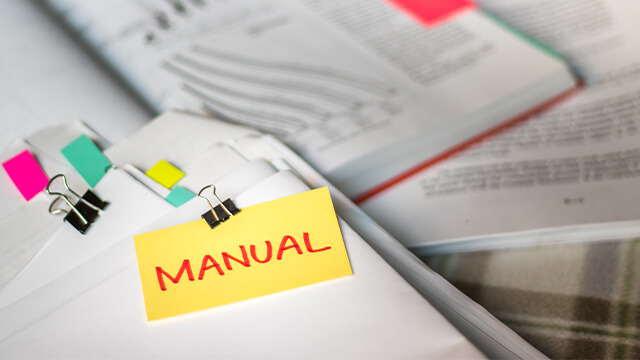






















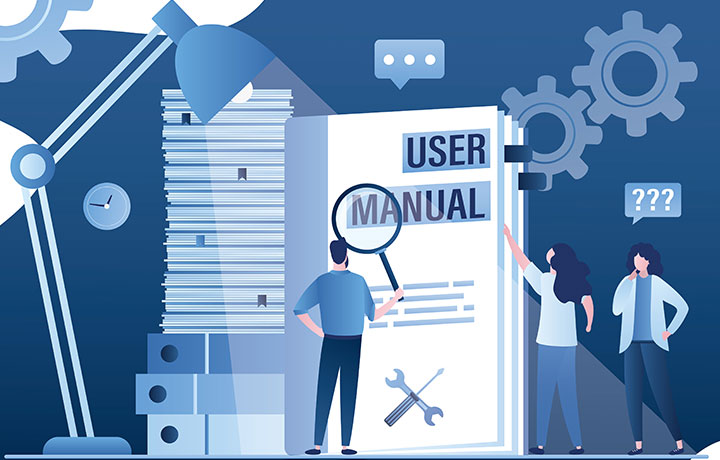









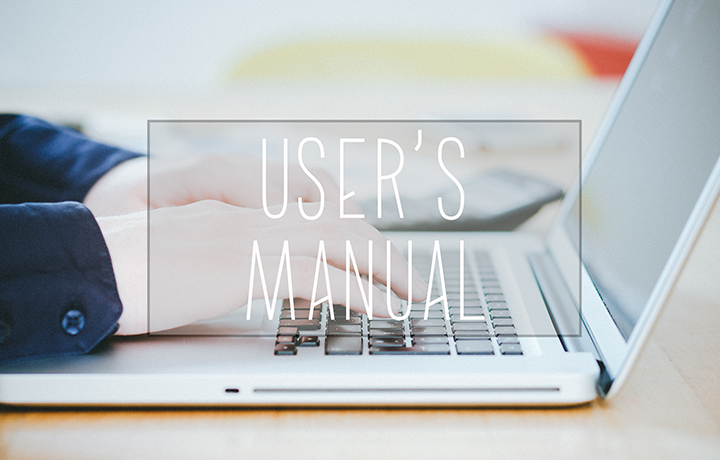











 Manual Creation
Manual Creation Director, Writer
Director, Writer In-house support
In-house support Video
Video Manual
Manual Manual Creation
Manual Creation Manual Creation
Manual Creation Manual Documentation
Manual Documentation